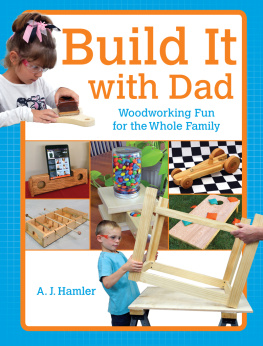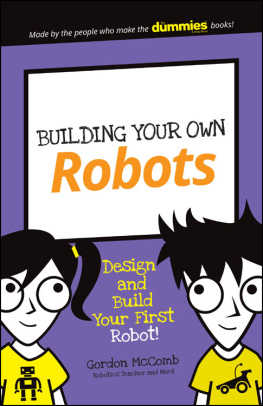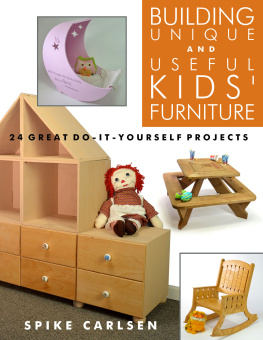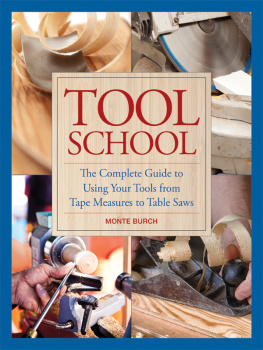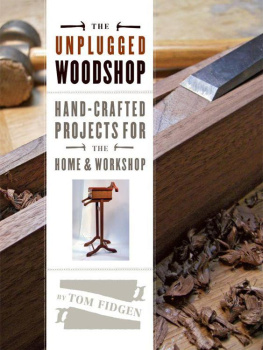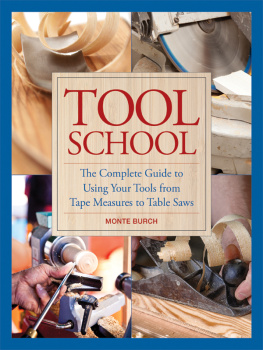A. J. Hamler
Thank you for purchasing this Popular Woodworking eBook.
Sign up for our newsletter and receive special offers, access to free content, and information on the latest new releases and must-have woodworking resources! Plus, receive a coupon code to use on your first purchase from ShopWoodworking.com for signing up.
or visit us online to sign up at
http://popularwoodworking.com/ebook-promo
Dedication
To Mom and Mike, who built things with me.
To my daughter Courtney, who I built things with.
And to my grandson Jed, who will one day build things with skills handed down from all of us.
Contents
Introduction
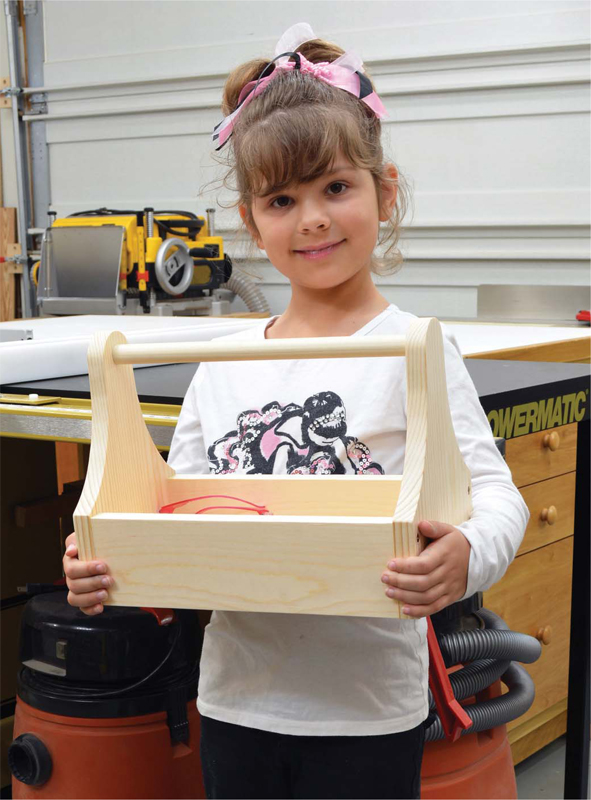
Working with Kids
One of the fondest memories of my daughter Courtney was the day we bought her first big girl bed. As I was assembling it, her understandable excitement was eclipsed only by her fascination with the process. She asked tons of questions about what I was doing, and every time I did something new came the plea, Can I try it, Daddy?
There really wasnt much I thought she could do, though the parts were heavy, the assembly complicated, and the tools unfamiliar. She wasnt quite three years old, but she kept asking. Then, when I had one corner of the frame finished, it occurred to me that tightening a couple screws might be a task that was easy enough for her. So I backed off the screws a bit, showed her where each screw was and how the screwdriver fit the end, and told her to go at it.
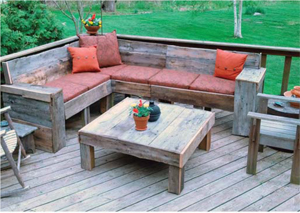
I neednt have worried. She immediately grasped the concept and after a few moments of fumbling with the screwdriver, she handily took care of it. Her little muscles couldnt tighten it all the way, of course, but I didnt tell her that. Instead, we moved on to the next corner and I let her do all the screws there. Her concentration was such that she didnt even notice me coming behind her to fully tighten screws and bolts. To attach the headboard I first set the bolts and while she held the headboard upright I tightened one side, then we traded places and she took care of the other.
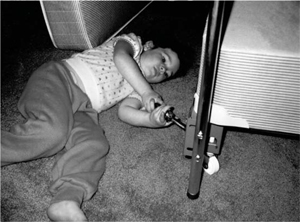
When the bed was complete she was pleased nearly to bursting with her work. In truth, at only three years old her contributions were minimal, but to her mind she built that bed, and for months afterward proudly showed it off to every person that came into our house. Not sure I realized it at the time, but I kindled a very important spark that day. In the years that followed, the two of us made a lot of things together in my shop and around the house.
I enjoy building things; always have. But when working with my daughter I realized something else: I enjoyed it even more, and so did she. More importantly, she remembered everything I showed her, and every skill she learned.
Courtneys in her early 30s now, but has continued her interest in building things to this day. In the last year alone shes made her own rustic deck furniture from 200-year-old reclaimed oak, lined a hallway with built-in bookcases, created storage shelves for my new grandsons room, and is currently remodeling a bathroom from the floor up, including tile work, cabinetry, new drywall, flooring and shelves. I couldnt be more proud of her.
Working with kids what to expect
Im guessing youve already gotten a taste of this experience and are eager for more, and thats where this book comes in. The 22 projects that follow are perfect for building as a team. Ive carefully chosen the projects to represent a wide range of interests. Some are strictly for fun and games, others for those interested in the great outdoors, and some that are useful around the house.
In all cases, though, Ive kept things on the simpler side; if there were two ways of doing a particular step or process, the projects typically go with the easier one. Ive also geared everything presented here to a basic tool kit. You wont need any large machinery for any of the projects. Thats not to say, however, that if youve got a fully tricked-out shop that machinery is off-limits. To the contrary, if there are some steps youd like to do yourself to save time then, by all means, do that. Ill even note from time to time steps that can be done with larger machines, but its important to know at the outset that not a single project in this book requires them.
Im going to assume that you already have a grasp of basic tools and carpentry techniques, so this book isnt a cover-to-cover tutorial on how to become a woodworker. However, when it comes to how a tool works or how something is done I wont leave you hanging; even if youre familiar with the process, Ive presented the projects as learning experiences for both you and your young woodworkers.
Keep in mind just how much youngsters will be able to do for themselves and which parts are best left to your adult hands. Unfortunately theres no hard-and-fast rule for this; youll have to trust your own knowledge of how your kids handle tasks. As you get started, always remember to demonstrate each new technique before you turn them loose, and go slow with things that are new to them. If you see that something is too complicated or a tool too difficult to handle at first, its imperative that you dont force the child to do it until they have enough confidence to do it safely and in a manner that makes them feel good about the task theyve just done.
If youll be working with more than one child on a project, be sure to keep everyone fully involved. While one is working on the main task, have the other in a support role. Then on the next task they can switch roles. As always, keep age differences in mind: One child may be more ready for a task than the other, or one may tire more quickly.
For groups of three or more, it might be best to have them each work on their own project rather than work together on a single one. This way no one is idle while the others are having fun, and youll find it easier directing a group on the same task as opposed to dividing your attention among individual kids. Also, by working in this manner each child is at the same step at the same time, everyone gets the same amount of instruction and guidance, and they all finish together. As a bonus, youll find when working side-by-side on identical projects that they tend to support each other as they work often without being coached to do so. Dont be surprised to see one child who grasps a task more readily offering help to the others.
Its true that we all learn by trial and error, and theres nothing wrong with a youngster coming away from a task feeling, Ill do it better next time. But to build confidence and skill its also important that kids experience doing something correctly. If you see that theyre having too much difficulty with something, suggest that you take care of that step yourself while they handle another part of the building process that might be more familiar. Given time and practice, even those difficult tasks will become easier, but you dont want to overload them with things that just dont go right.

